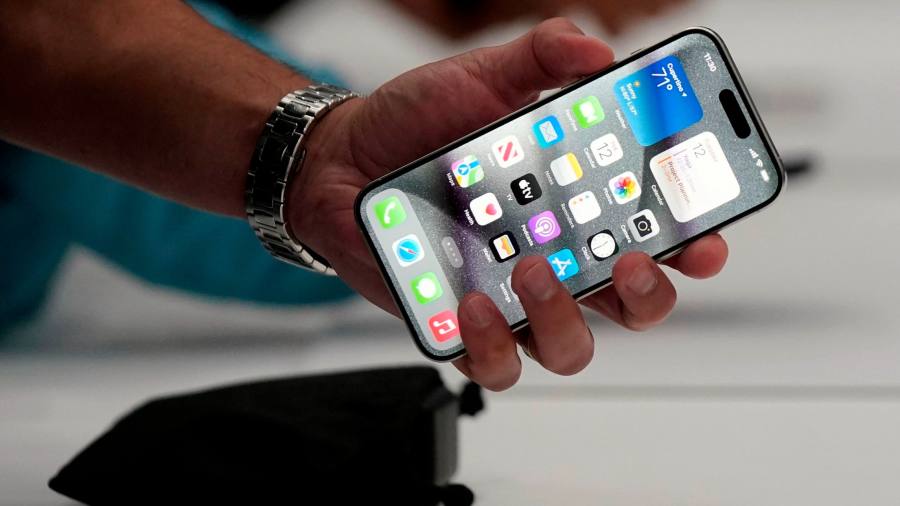Receive free Apple Inc updates
We’ll send you a myFT Daily Digest email rounding up the latest Apple Inc news every morning.
Apple unveiled four new iPhone models and two updated Watches in Cupertino on Tuesday, as it attempts to lure consumers in an economy where they are holding on to their devices for longer.
Pricing for the new iPhone 15 Pro Max models will start at $1,199 — $100 more than a year ago — reflecting Apple’s strategy of making up for stagnant unit sales with higher average selling prices.
The Pro and Pro Max models are the first smartphones with 3 nanometre chips made by TSMC, and Apple touted a “breakthrough” new GPU for faster graphics processing. They have three cameras, and can take “spatial videos” — a proprietary format designed to be seen through the Vision Pro headset that goes on sale next year.
All four models now use a universal USB-C charging port, following demands from EU regulators.
The company’s iPhone product line now ranges from the entry-level iPhone SE, starting at $429, to the Pro Max model at $1,199. Although annual refreshes are more incremental than a decade ago, Apple’s focus on higher-end models has boosted average selling prices from $627 in 2015 to $890 this year, according to Counterpoint Research.
“There is an iPhone for everyone catering for different habits supported by numerous trade-in and recycling programmes,” said Paolo Pescatore, analyst at PP Foresight. “Significant enhancements on the camera optical zoom will help Apple compete head on with rivals like Samsung, thus enticing users to switch to iPhone.”
The standard iPhone 15 and larger screen iPhone 15 Plus have improved cameras with a 48 megapixel main camera. Both start at the same price point as a year ago, $799 and $899 respectively.
The new Apple Watch Series 9 features a new gesture recognition, called “double tap” that will let users answer calls and pause music with a tap of the index figure and thumb. The watch, which starts at $399, is Apple’s “first carbon-neutral product”, the company said. The Ultra 2, a second-generation watch designed for athletes, will start at $799.
Throughout the event Apple touted its environmental credentials, saying it would no longer use leather in any of its accessories. It introduced “FineWoven”, a custom material for use in watch bands and iPhone cases, which it said came with a “significantly lower” carbon footprint.
The event comes at a challenging time for Apple. It is the world’s most valuable company, but revenues have declined for the past three quarters. The global market share for its most important product, the iPhone, is slowly increasing, but smartphones in general are in a downturn.
The upcoming quarter will be its most important of the year, encompassing the crucial holiday shopping season. Meanwhile, the company’s biggest rival in China, Huawei, just released a new flagship phone that threatens to dent Apple’s market share. It is also contending with reports that Beijing has told state employees not to use Apple phones.
Apple shares fell more than 5 per cent in the five days leading up to the event, as investors worry that problems in China could hurt demand and production. After the event on Tuesday the stock was down 2 per cent, reflecting the incremental nature of the upgrades and lack of surprises.
Globally, Apple has slowly but consistently been taking market share from Android, and this year is expected to take a record 20 per cent of all smartphone shipments, up from 15 per cent a decade ago, according to Counterpoint Research.
Jay Goldberg, a chips consultant and founder of D2D Advisors, said “the story of the year” for Apple is how it is building market share in India and emerging markets — countries where iPhone penetration is in the single digits but has potential to climb.
Read the full article here



